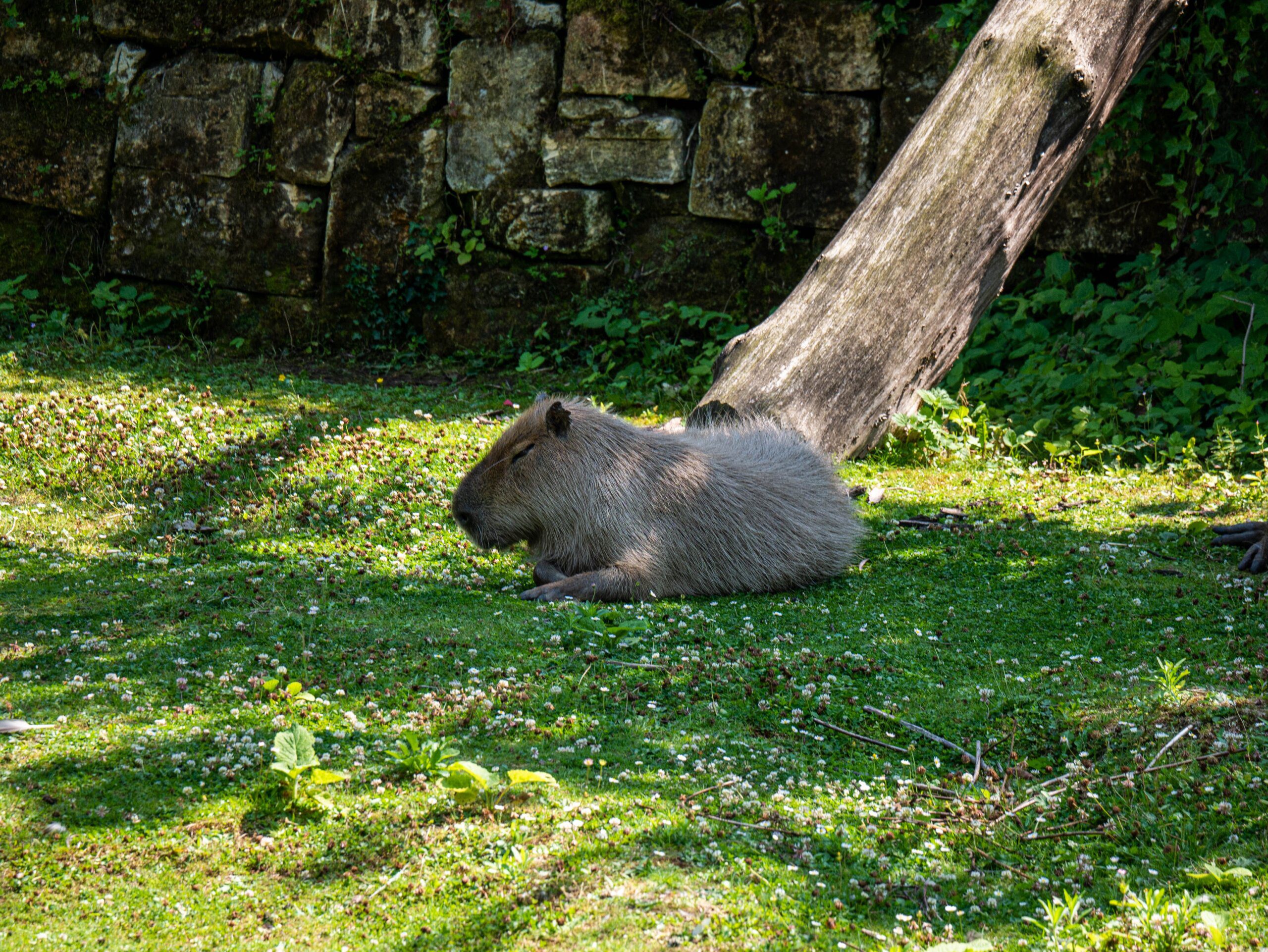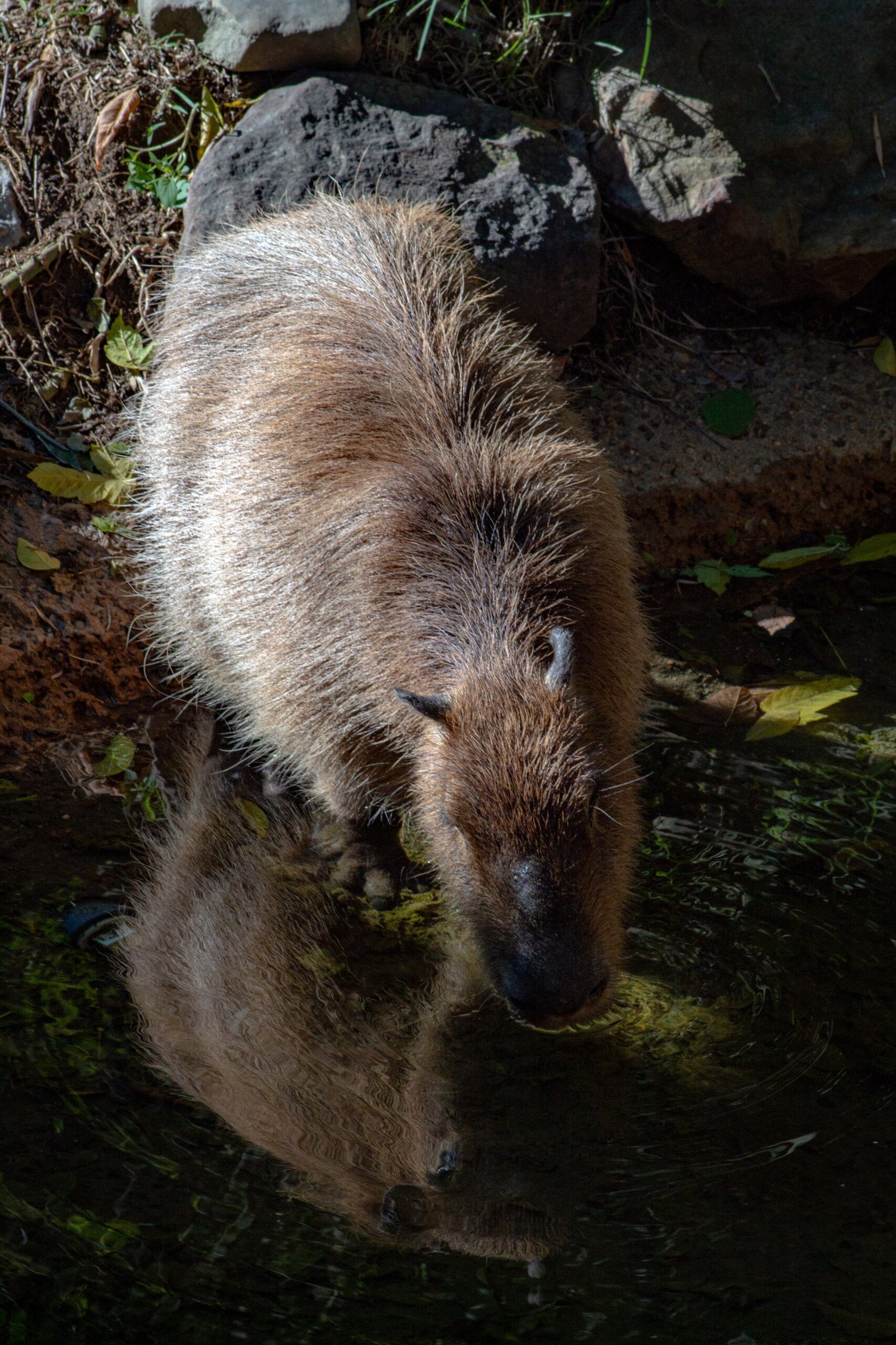If you’ve always dreamed of having an unusual pet that will bring endless joy to your life, look no further than the capybara. These charming creatures, native to South America, are the largest rodents in the world and make for fascinating companions. In this ultimate guide, you’ll discover everything you need to know about keeping a capybara as a pet, from their unique characteristics and habitat requirements to their diet and socialization needs. Get ready to embark on a delightful journey of friendship and adventure with your very own capybara!

Choosing a Capybara as a Pet
Considerations before Getting a Capybara
Before getting a capybara as a pet, there are several important factors to consider. Firstly, capybaras are social creatures and thrive in the company of other capybaras, so it is important to either have more than one capybara or ensure they have regular social interactions. Additionally, capybaras require a large outdoor space to roam and explore, so it is crucial to have adequate space for their needs. Finally, capybaras have a long lifespan of around 10-12 years, so potential owners should be prepared for a long-term commitment.
Legal Requirements and Permits
It is essential to check the legal requirements and permits associated with owning a capybara in your area. While capybaras are legal to own as pets in some places, there may be restrictions or regulations in others. Research local laws and regulations regarding exotic pet ownership and obtain any necessary permits before bringing a capybara home.
Finding a Reputable Breeder
When looking for a capybara, it is crucial to find a reputable and responsible breeder. A reputable breeder will prioritize the health and welfare of their capybaras, ensuring that they are well-fed, properly socialized, and have received appropriate veterinary care. Seek recommendations from trusted sources, visit the breeder’s facility to assess the living conditions and meet the capybaras in person, and ask about the breeder’s breeding practices and experience.
Cost of Owning a Capybara
Owning a capybara comes with various costs that potential owners should be prepared for. In addition to the initial purchase price, there are expenses such as enclosures, food, veterinary care, and any necessary permits. Capybaras also have specific dietary needs that require regular purchases of fresh produce and specialized feed. It is essential to factor in these costs and ensure you have the financial means to provide for your capybara’s well-being.
Caring for Your Capybara
Housing and Enclosure
Capybaras are semi-aquatic animals that require access to water for swimming and cooling down. Their enclosure should include a shallow pool or pond that allows them to engage in their natural behaviors. The size of the enclosure should be proportional to the number of capybaras, with a minimum of 200 square feet per capybara to ensure they have enough space to roam. It is also important to provide shelters and hiding spots within the enclosure to create a sense of security for your capybara.
Temperature and Environment
Capybaras are native to South America, where they thrive in warm and humid climates. As such, it is crucial to maintain a suitable temperature and environment for your pet capybara. The enclosure should have shaded areas to protect them from direct sunlight, as well as heating elements for cooler months. Maintaining a comfortable temperature and humidity level will help ensure the well-being and health of your capybara.
Feeding and Nutrition
Proper nutrition is vital to keep your capybara healthy and thriving. Their diet should consist of a variety of fresh vegetables, fruits, grasses, and high-quality commercial capybara pellets. Ensure that the food provided is free from toxic plants and pesticides. Capybaras also require a constant supply of fresh water for drinking and swimming. Consult a veterinarian or capybara care guide for specific dietary recommendations based on the age and health of your pet.
Socialization and Bonding
Capybaras are highly social animals that thrive on companionship. If you choose to have a single capybara, make sure to provide regular social interaction with humans and/or other suitable animals. However, it is generally recommended to have more than one capybara to fulfill their social needs adequately. The introduction of capybaras should be done gradually, allowing them to establish a bond and hierarchy. Spending quality time with your capybara and providing opportunities for socialization will contribute to their overall well-being.

Health and Veterinary Care
Selecting a Capybara-Friendly Vet
Finding a veterinarian who is knowledgeable and experienced in caring for capybaras is crucial. Capybaras have specific health needs and require specialized veterinary care. Consult local exotic animal veterinarians or seek recommendations from other capybara owners. Ensure that the chosen vet is comfortable working with capybaras and has a good understanding of their unique physiology and behavior.
Routine Health Examinations
Regular health check-ups are essential to monitor the well-being of your capybara. During these examinations, the vet will assess their body condition, check for any signs of illness or injury, and provide necessary vaccinations or treatments. Routine examinations also allow for early detection of any potential health issues, increasing the chances of successful treatment.
Vaccinations and Preventive Care
Vaccinations play a vital role in maintaining the good health of your capybara. Discuss with your veterinarian which vaccinations are recommended, such as those for common diseases like rabies and leptospirosis. Additionally, preventive measures against parasites, both internal and external, should be taken. Regularly administer deworming medications and implement flea and tick prevention protocols.
Common Health Issues
While capybaras generally have a robust immune system, they can still be susceptible to certain health issues. Some common health concerns in capybaras include dental problems, skin infections, respiratory infections, and gastrointestinal issues. Regular veterinary care, a balanced diet, and proper hygiene practices can help prevent or manage these issues. If you notice any changes in your capybara’s behavior or physical condition, consult your vet immediately.
Hygiene and Grooming
Maintaining a Clean Living Environment
Keeping your capybara’s living environment clean is essential for their health and well-being. Regularly clean their enclosure, removing any waste or soiled bedding. Replace water in the swimming area frequently to prevent bacterial growth. Avoid using harsh chemicals during cleaning, as capybaras are sensitive to strong odors. Maintaining a clean living environment will help prevent the spread of diseases and minimize odor.
Bathing and Brushing
Capybaras are known for their ability to maintain their own hygiene, and frequent bathing is not necessary. However, if your capybara gets dirty or encounters a particularly muddy area, a gentle rinse with lukewarm water is recommended. Brushing their fur occasionally can help remove any tangles or debris, keeping their coat healthy and clean.
Nail Trimming
Regular nail trimming is essential for capybara care. Overgrown nails can lead to discomfort and difficulty in walking. Use a proper nail clipper and be cautious not to cut too close to the quick, as this can cause bleeding. If you are uncertain or uncomfortable with trimming your capybara’s nails, consult a veterinarian or a professional pet groomer.
Handling Waste and Odor Control
Capybaras produce a significant amount of waste, so proper waste management is crucial. Ensure that waste is promptly removed from their enclosure and disposed of properly. Composting can be an environmentally friendly way to handle their waste. Additionally, odor control can be managed by maintaining a clean living environment, using bedding with absorbent properties, and implementing appropriate ventilation.

Exercise and Enrichment
Providing Ample Space and Enrichment
Capybaras are active animals that require ample space to roam and exercise. Ensure their enclosure provides enough room for them to move around comfortably. Offering various forms of enrichment, such as tunnels, platforms, and hiding spots, can help stimulate their natural behaviors and prevent boredom.
Playtime and Mental Stimulation
Regular playtime is crucial to keep your capybara mentally stimulated and happy. Engage in interactive activities, such as tossing balls or providing puzzle toys with treats hidden inside. Offering environmental enrichment, such as scatter feeding or introducing new objects to explore, can also help keep their minds active and prevent anxiety or destructive behaviors.
Outdoor Activities
If the climate allows, providing outdoor access for your capybara can offer additional exercise opportunities and exposure to natural stimuli. Ensure that the outdoor area is secure, free from potential hazards, and escape-proof. Supervise their outdoor activities to prevent encounters with predatory animals or accidental escape.
Training and Obedience
Capybaras can be trained to respond to basic commands and establish a bond with their owners. Positive reinforcement training methods, such as clicker training or rewards-based training, work well with capybaras. Teaching simple commands like “sit” or “stay” can aid in their overall safety and make interactions more enjoyable for both you and your capybara.
Behavior and Communication
Understanding Capybara Behavior
To provide the best care for your capybara, it is essential to understand their behavior. Capybaras are social animals that rely on a hierarchical structure within their group. They communicate through various vocalizations, body language, and scent marking. Observing and learning their specific behaviors will help you better understand their needs and overall well-being.
Body Language and Vocalizations
Capybaras communicate through a combination of body language and vocalizations. For example, teeth chattering or a low growl may indicate agitation or a warning sign. Wagging their tails and making purring sounds are signs of contentment. Understanding their body language and vocal cues will help you gauge their mood and respond accordingly.
Social Structure
Capybaras have a complex social structure. In the wild, they typically form groups consisting of an alpha male, several females, and their offspring. When keeping capybaras as pets, it is important to consider their social needs and provide appropriate socialization opportunities with other capybaras or compatible companion animals.
Signs of Distress or Illness
Being able to recognize signs of distress or illness in your capybara is crucial for their well-being. Some common signs include decreased appetite, lethargy, changes in behavior, weight loss, and abnormal discharges. If you notice any of these signs or anything out of the ordinary, consult a veterinarian who is experienced in capybara care to ensure timely and appropriate medical attention.
Interacting with Other Pets
Introducing Capybaras to Dogs and Cats
Introducing capybaras to other pets, such as dogs and cats, requires careful supervision and a gradual introduction process. Start by allowing brief, supervised interactions while keeping the capybara and the other pet on a leash or behind a barrier. Over time, increase the duration and closeness of the interactions, always monitoring for any signs of discomfort or aggression.
Supervising Interactions
When allowing interactions between capybaras and other pets, it is crucial to closely supervise their interactions at all times. Watch for any signs of stress or aggression from either party. If any tension arises, it is important to separate them and consult with a professional animal behaviorist for guidance.
Promoting Positive Relationships
With time, patience, and careful supervision, capybaras can form positive relationships with other pets. Encourage positive interactions by providing treats and rewards for calm and friendly behavior. Gradually increase the amount of time spent together, always prioritizing the safety and comfort of all animals involved.
Traveling with Your Capybara
Preparing for Travel
Traveling with a capybara requires careful planning and preparation. Ensure that you have a suitable carrier or enclosure that allows them to travel comfortably and securely. Familiarize your capybara with the carrier or enclosure before the trip, allowing them to explore and feel at ease. Prepare all necessary supplies, such as food, water, bedding, and any medications.
Transportation Safety
When traveling with a capybara, their safety is paramount. Secure the carrier or enclosure in the vehicle to prevent any shifting or impact during the journey. Avoid exposing them to extreme temperatures or prolonged periods of confinement. Make frequent stops to allow them to stretch, drink water, and relieve themselves if needed.
Accommodation and Arrangements
If you are planning to stay overnight during your trip, ensure that your accommodation is capybara-friendly. Research and contact pet-friendly hotels or accommodations that can meet the unique needs of your capybara. Inform them in advance about your pet and any specific requirements they may have.
Legal Considerations
Before traveling with your capybara, research and adhere to any legal considerations at your destination. Different regions and countries have varying regulations regarding the transportation and ownership of exotic pets. Ensure that you have the necessary permits and documentation to avoid any legal issues or complications.
Legal and Ethical Concerns
Capybaras as Exotic Pets
The ownership of capybaras as exotic pets raises both legal and ethical concerns. While they can make fascinating and unique companions when provided with proper care, potential owners must consider the laws and regulations surrounding their ownership. Responsible ownership requires meeting the capybara’s physical and emotional needs and should not contribute to the illegal wildlife trade.
Responsible Ownership
Responsible ownership of a capybara involves providing for their physical, social, and emotional well-being. This includes providing adequate space, companionship, veterinary care, and a balanced diet. It also involves continuously educating oneself about capybara behavior and needs, as well as supporting conservation efforts for capybara populations in the wild.
Conservation Efforts
Capybaras play an important role in their natural ecosystems and are considered a species of least concern by the International Union for Conservation of Nature (IUCN). However, their populations can still face threats, such as habitat loss and illegal hunting. Supporting conservation efforts and raising awareness about the importance of protecting capybaras and their habitats can contribute to their long-term survival.
Exotic Pet Laws and Regulations
Exotic pet laws and regulations vary across different regions and countries. It is important for potential capybara owners to familiarize themselves with these laws and ensure compliance to avoid legal issues. By understanding and adhering to these regulations, individuals can help prevent the illegal trade and exploitation of capybaras.
Conclusion
Is a Capybara the Right Pet for You?
Deciding to bring a capybara into your life is a big commitment that requires careful consideration. They are unique and fascinating animals that can form strong bonds with their owners, but their needs must be met to ensure their well-being. If you have ample space, time, and resources to provide for a capybara’s social, physical, and emotional needs, they can make wonderful and rewarding companions.
Owning a Capybara: Challenges and Rewards
Owning a capybara comes with its own set of challenges and rewards. The challenges include the need for a large space, specialized care, and the legal considerations associated with owning an exotic pet. However, the rewards of having a capybara as a pet are immense – the joy of experiencing their unique personalities, forming a deep bond, and gaining insight into the fascinating world of these remarkable creatures. With proper education, preparation, and commitment, owning a capybara can be a truly rewarding experience for those who are up to the challenge.



